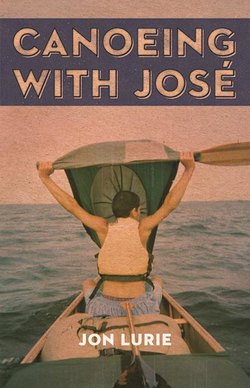Читать книгу Canoeing with Jose - Jon Lurie - Страница 18
На сайте Литреса книга снята с продажи.
ОглавлениеRED RIVER MUD
In Canoeing with the Cree, Eric Sevareid sums up the 160 river miles between Fargo and Grand Forks, North Dakota, in one blasé paragraph: “The journey down the Red River from Fargo had been almost uneventful, a long, monotonous process of steady paddling, with no current to aid us, around unending bends, under a hot sun, beside muddy banks.”
Some things don’t change. We had agreed to a daily goal of 40 river miles, but 15 miles out of Fargo, José was hungry and refusing to paddle unless he had a hot meal.
It was impossible to cook lunch, I explained. There were no dry landings, the stove was buried somewhere in the depths of our packs, and we would have to use precious drinking water. We also had plenty of food that required no preparation: trail mix, jerky, dried fruit, chocolate, cheese, and crackers.
“It ain’t real food unless it’s cooked,” he replied. “I can’t live on birdseed.”
I was increasingly frustrated by José’s rickety stroke, and eventually I agreed to search for a relatively hospitable bank. Ankle-deep in inky goop, I fired up the single-burner camp stove and let José have at it. He boiled oriental-flavored ramen and fried squares of summer sausage, then combined them to make soup. I swatted flies off my back, and watched the conveyor flow past without us.
After filling his belly with a hot meal, José paddled hard until sundown, by which point we had logged just 25 miles since setting out that morning. We had had enough for the day, but our map showed no campsites or landings nearby. I anxiously searched the shore for a bivouac in the dying light, but this part of the river wound through a vast grassy wetland. I couldn’t find a circle of earth that would support a tent.
As the last solar strands were extinguished by the closing sky, the darkness became absolute. We pulled on our headlamps and scanned the shores, the beams lighting steam phantoms rising from the surface. An unsettling quiet moved in with the mist, and although we discussed possibly paddling all night, we were both exhausted, a little spooked, and anxious for our sleeping bags.
Suddenly a shot rang out, so close we could feel it in our bones.
José fell forward and thrust his chin between his knees.
Another blast, this one closer. José stayed low and looked back at me. “What the fuck, dawg? Rednecks is shooting at us? This is some Deliverance shit.”
Just then I saw the ripple from a beaver’s tail shiver against the side of our boat.
“I ain’t getting raped out here,” José continued obliviously, “tell you that right now.”
Eventually a wet furry head swam across the beam from his headlamp, prompting José to climb back onto his seat and resume paddling.
After some time, we came to the County Road 26 bridge. The covered earth beneath it would have worked, but José wasn’t having it. He said he would only camp in a “designated campsite—one on the map.”
The Red River was a new canoe route for the Minnesota DNR, and they had only published one of three maps planned for this region. In 10 miles we would depart the area it covered, and the only promising designation between our location and the edge of the map was four to five miles downstream, at the junction of the Sheyenne River. Called “Catch Big Cats,” it was marked with the key symbols for “outfitter” and “lodging.”
José was convinced that this was where we should stay. “We’ll get a room, have a shower, order up a pizza, some room service maybe.”
I had a feeling this place would not be that kind of party. I read the description from the map aloud: “Catch Big Cats Guide Service. Private catfish guiding and lodging.” Sounded to me like redneck central.
José was insistent. “It’s on the map!”
